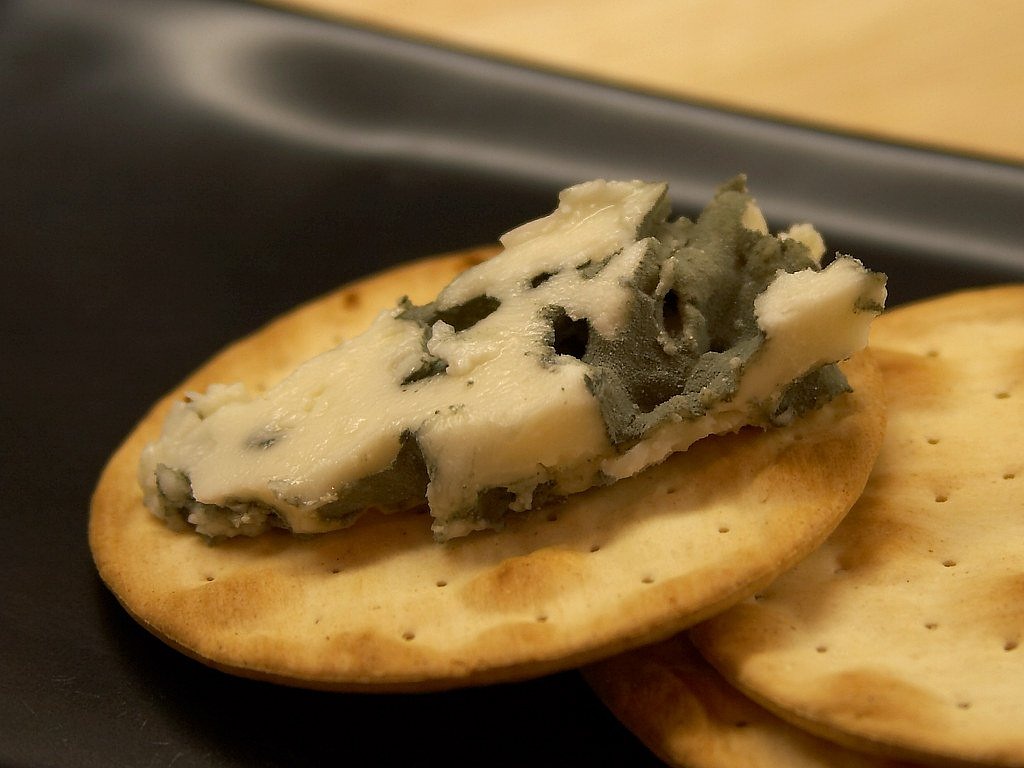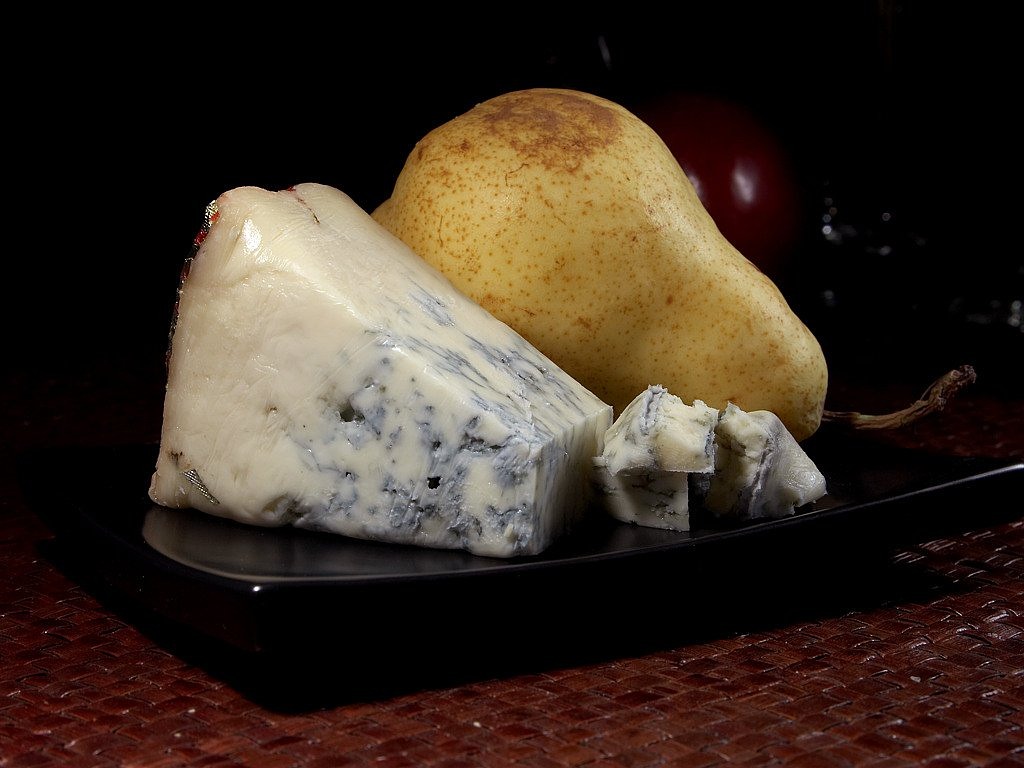Introduction
In the world of cheese, few varieties captivate the senses quite like blue cheeses. These unique creations, characterized by their striking blue veins and bold flavors, are a testament to the rich tradition of cheese-making in Europe. From the crumbly Roquefort of France to the creamy Gorgonzola of Italy, Europe’s blue cheeses offer a world of diversity and culinary adventure. In this article, we embark on a journey through the continent to explore the fascinating world of blue cheeses, each with its distinct character and unique traditions.
In the world of cheese, few varieties captivate the senses quite like blue cheeses. These unique creations, characterized by their striking blue veins and bold flavors, are a testament to the rich tradition of cheese-making in Europe. From the crumbly Roquefort of France to the creamy Gorgonzola of Italy, Europe’s blue cheeses offer a world of diversity and culinary adventure. In this article, we embark on a journey through the continent to explore the fascinating world of blue cheeses, each with its distinct character and unique traditions.
France’s Crown Jewel: Roquefort
Our journey begins in the caves of Roquefort-sur-Soulzon, where Roquefort cheese reigns supreme. This blue-veined masterpiece is aged in the damp, mineral-rich caves of the region, imparting it with a distinctive tang and a crumbly, melt-in-your-mouth texture. Roquefort’s sharp, salty punch is perfect for those who crave bold flavors. It’s no wonder that this cheese holds the prestigious title of being one of the world’s oldest known blue cheeses.
Italy’s Blue Delight: Gorgonzola
Venturing south into Italy, we encounter Gorgonzola, a blue cheese that offers a thrilling contrast. Its creamy, marbled interior is punctuated with blue-green veins, creating a symphony of flavors—earthy, tangy, and slightly sweet. Gorgonzola adds depth to salads, sauces, and even desserts, showcasing Italy’s flair for culinary innovation. Each bite is like a journey through the Italian countryside, with its rolling hills and rich dairy traditions.
Spain’s Hidden Gem: Cabrales
Crossing the Pyrenees into Spain, we discover Cabrales cheese, a fiery Spanish blue cheese with an intensely sharp and tangy character. The cheese ages in the cool, damp caves of the Picos de Europa, which imparts it with a robust, earthy essence. Cabrales ignites the senses and pairs wonderfully with a glass of Spanish Rioja. Its storied history and unique production methods make it a hidden gem in the world of blue cheeses.
Exploring Beyond Borders
Our journey doesn’t stop at the borders of these well-known blue cheeses. Throughout Europe, from Denmark’s creamy Danablu to England’s pungent Stilton, blue cheeses take on various forms and flavors. Each country adds its own twist to this ancient cheese-making art, resulting in a wide array of choices for adventurous palates.
Pairing Possibilities
Blue cheeses, with their bold personalities, are perfect companions for a myriad of culinary creations. Whether crumbled over a crisp salad, blended into a creamy pasta sauce, or enjoyed with honey and nuts as a dessert, blue cheeses offer a versatile canvas for culinary experimentation. And let’s not forget their affinity for wines, especially sweet dessert wines, which create a harmonious contrast to their savory richness.
In the world of blue cheeses, there’s something to tantalize every taste bud and inspire culinary creativity. From the historic caves of France to the picturesque hills of Italy and beyond, these cheeses embody the essence of European cheese-making traditions. As we explore the fascinating world of blue cheeses, we not only savor their flavors but also uncover the stories and traditions that have shaped them into the culinary treasures they are today.
Looking for more insights? You’ll find them right here in our extended coverage: 17 Facts About Blue Cheese – Facts.net
Our exploration begins in the limestone caves of Combalou, France, where Roquefort, the “King of Cheeses,” is born. Made from the milk of the Lacaune sheep, Roquefort undergoes a meticulous aging process in these natural caves. The Penicillium roqueforti mold, unique to this region, imparts the cheese with its signature blue veins and intense flavor.
Roquefort is renowned for its sharp, tangy taste and crumbly texture. Its pungent aroma is a testament to its bold character. In France, it’s a symbol of culinary excellence and is often enjoyed with crusty bread, in salads, or as an indulgent addition to sauces and dressings.
Our exploration begins in the limestone caves of Combalou, France, where Roquefort, the “King of Cheeses,” is born. Made from the milk of the Lacaune sheep, Roquefort undergoes a meticulous aging process in these natural caves, deep within the earth’s embrace. This cheese, with a heritage as rich as the caves themselves, is a masterpiece that epitomizes the harmonious marriage of tradition and nature.
The Penicillium roqueforti mold, unique to this region, plays an irreplaceable role in the creation of Roquefort’s distinctive character. As it weaves its magic within the cheese, it gives rise to the enchanting blue veins that crisscross the ivory canvas, creating an artful tapestry of flavors. These veins are the very essence of Roquefort, bringing forth its intense and captivating taste.
Roquefort is renowned for its sharp, tangy taste, which electrifies the palate with each bite. It’s a flavor that lingers, leaving a lasting impression, and a testament to the cheese’s bold and unapologetic character. Its crumbly texture adds to the experience, offering a delightful contrast to the intense flavor explosion that unfolds in your mouth.
The pungent aroma that wafts from Roquefort is a prelude to the bold symphony of tastes that await. It is a scent that embodies centuries of tradition and craftsmanship, promising an unforgettable culinary experience. In France, Roquefort is not just a cheese; it’s a symbol of culinary excellence, a source of pride, and an ambassador of French gastronomy to the world.
Roquefort’s versatility in the kitchen is another aspect of its allure. It’s not merely a cheese for special occasions; it’s a staple in French households. It graces the table alongside crusty bread, offering a delectable contrast in textures and flavors. It elevates salads from ordinary to extraordinary and adds an indulgent richness to sauces and dressings. Roquefort’s versatility knows no bounds, making it a cherished ingredient in both traditional and modern cuisine.
As we delve deeper into the world of Roquefort, we uncover not just a cheese but a living testament to the harmonious relationship between humans and nature. The limestone caves of Combalou, with their perfect conditions for cheese aging, have become a sanctuary for this culinary masterpiece. Roquefort is more than a cheese; it’s a story of generations of artisans who have honed their craft, a celebration of a unique terroir, and a sensory journey that transports us to the heart of France.
So, whether you savor Roquefort on its own or incorporate it into your culinary creations, remember that each bite carries with it a slice of history, a taste of tradition, and the bold spirit of Roquefort-sur-Soulzon, where the “King of Cheeses” continues to reign supreme.
Explore this link for a more extensive examination of the topic: 6 Types of Cheese – Flavors, Pairings, & Textures

Crossing the border into Italy, we encounter Gorgonzola, a creamy blue cheese with a distinct tanginess. Made primarily from cow’s milk, Gorgonzola hails from the Lombardy and Piedmont regions. It’s recognized by its soft, creamy interior and characteristic blue-green veins.
As we journey across the border into the captivating culinary landscape of Italy, we are welcomed by the unmistakable presence of Gorgonzola, a cheese that embodies the essence of indulgence with its velvety texture and distinctive tanginess. Born primarily from the creamy milk of cows that graze in the lush pastures of Lombardy and Piedmont, Gorgonzola is a testament to the artistry of Italian cheesemakers and the unique terroir of these regions.
The first encounter with Gorgonzola is a sensory revelation. Its soft, creamy interior beckons like a sumptuous invitation, a testament to the expert craftsmanship that goes into its production. The mere sight of this cheese, adorned with its characteristic blue-green veins, is a visual feast that hints at the complexity of flavors that lie within.
Once you embark on the journey of tasting Gorgonzola, the experience unfolds in layers. The initial creamy richness gently gives way to a tangy kick that dances on your taste buds. It’s a delightful contrast, a harmonious balance of creamy and tangy, making Gorgonzola a cheese that’s as versatile as it is unforgettable.
In Italy, Gorgonzola isn’t just a cheese; it’s a symbol of culinary heritage and tradition. It’s a cheese that tells the story of the lush Italian countryside, where cows graze on fragrant pastures, lending their milk a unique depth of flavor. The cheese is a testament to the meticulous aging process, where skilled artisans patiently nurture each wheel, allowing it to develop the distinctive blue-green marbling that is the hallmark of Gorgonzola.
Gorgonzola’s culinary applications are as diverse as the regions from which it hails. It can be crumbled over a crisp salad, adding a burst of flavor and texture, or melted into a creamy sauce to elevate a pasta dish to gourmet heights. It pairs exquisitely with fresh fruit, contrasting its richness with the sweetness of pears or figs, and it’s a star ingredient in creamy risottos or atop a perfectly grilled steak.
In essence, Gorgonzola is not just a cheese; it’s an embodiment of Italy’s passion for food, its reverence for tradition, and its commitment to crafting flavors that linger in memory long after the meal is finished. Each bite of Gorgonzola is a culinary voyage through time and terroir, a celebration of the artistry that is Italian cheesemaking, and a reminder that some cheeses are not just meant to be eaten but to be cherished as an integral part of Italy’s gastronomic heritage.
Explore this link for a more extensive examination of the topic: Blue Cheese vs Roquefort: A Comprehensive Comparison

Gorgonzola Dolce (sweet) and Gorgonzola Piccante (sharp). The Dolce version is mild and creamy, with a gentle blue vein presence, making it a versatile choice for salads and dressings. On the other hand, the Piccante variety boasts a more pronounced flavor profile, perfect for those who appreciate bold, tangy cheeses. Gorgonzola also shines when paired with ripe pears or as a topping for risotto.
Within the world of Italian cheeses, Gorgonzola stands as a true gem, offering a delightful duality of flavors that cater to a wide range of palates. This blue-veined cheese, originating from the Lombardy and Piedmont regions of Italy, comes in two distinct personalities: Gorgonzola Dolce (sweet) and Gorgonzola Piccante (sharp).
Gorgonzola Dolce, with its name alluding to its gentle nature, presents a mild and creamy character. The blue veins meander gracefully through its ivory-hued interior, creating a subtle contrast in both appearance and taste. This variety of Gorgonzola is the epitome of versatility. Its mildness makes it an excellent choice for those who are new to blue cheese, as it provides just a hint of that characteristic tanginess without overwhelming the senses. In the world of salads and dressings, Gorgonzola Dolce shines as a smooth and harmonious addition, elevating greens and vinaigrettes to new heights. It also pairs splendidly with fresh fruits like ripe pears, where the cheese’s creaminess complements the fruit’s natural sweetness, creating a harmonious dance of flavors.
On the other hand, Gorgonzola Piccante, as its name suggests, offers a more assertive and robust flavor profile. Here, the blue veins make a bolder statement, infusing the cheese with a tangy, peppery bite that can be truly exhilarating for the adventurous cheese connoisseur. This variety adds a distinctive and unforgettable punch to a cheese plate or a charcuterie board, standing proudly alongside cured meats, olives, and crusty bread. It’s also the cheese of choice for those who seek a more pronounced and dynamic flavor when used as a topping for risotto, where its intense character elevates the entire dish to culinary excellence.
Gorgonzola, in both its sweet and sharp forms, embodies the essence of Italian cheesemaking expertise and is a testament to the rich dairy traditions of the region. Whichever Gorgonzola variety you choose, you’re embarking on a flavorful journey that celebrates the artistry of cheesemaking and the pleasure of savoring cheese that offers a perfect balance of mildness and boldness. So, whether you’re exploring the gentle nuances of Dolce or embracing the fiery zest of Piccante, Gorgonzola is an invitation to indulge in the diverse and captivating world of blue-veined cheeses.
To delve further into this matter, we encourage you to check out the additional resources provided here: Blue Cheese

Our journey takes us to the United Kingdom, where Stilton, England’s pride, reigns as the country’s iconic blue cheese. Stilton is known for its crumbly yet creamy texture and its rich, complex flavor. It carries a protected designation of origin (PDO), signifying its authenticity and adherence to tradition.
Stilton’s blue veins are achieved through a careful piercing process that allows air to interact with the cheese, promoting the growth of the Penicillium roqueforti mold. The result is a cheese with a bold, earthy aroma and a robust, tangy taste. Stilton is a beloved addition to cheeseboards, sandwiches, and hearty soups.
As we continue our culinary expedition through the United Kingdom, we arrive at a cheese that stands as a symbol of English pride and cheese-making excellence – Stilton. This iconic blue cheese, with its centuries-old heritage, has carved a special place in the hearts of cheese enthusiasts worldwide. Stilton is not just a cheese; it’s a testament to tradition, craftsmanship, and a distinctive flavor profile that lingers in memory.
Stilton’s unique allure begins with its texture – a delicate balance between crumbly and creamy. This textural duality makes it a cheese that is both easy to work with in the kitchen and a delight to savor on its own. Each bite offers a delightful contrast of sensations, a testament to the meticulous care that goes into its production.
The heart and soul of Stilton, however, lie in its rich, complex flavor. It’s a cheese that captivates the taste buds with a harmonious blend of creamy, earthy, and tangy notes. As you savor Stilton, you’ll discover layers of flavor that develop with each bite, revealing its depth and character. Whether enjoyed on a cheeseboard alongside fruits and nuts or as the star ingredient in a hearty soup, Stilton elevates every culinary creation it graces.
What sets Stilton apart and underscores its authenticity is its coveted PDO status – a protected designation of origin. This label assures consumers that the cheese has been produced in a specific geographic region following time-honored methods. It’s a mark of quality and a guarantee that you’re experiencing the true essence of Stilton.
The signature blue veins that course through Stilton are a visual and gustatory delight. Achieved through a careful piercing process, air is allowed to interact with the cheese, promoting the growth of the Penicillium roqueforti mold. This mold infusion gives Stilton its bold, earthy aroma and a robust, tangy taste that distinguishes it from other blue cheeses. It’s an artful process that requires precision and patience, resulting in a cheese that is both visually striking and exceptionally flavorful.
Stilton is more than a cheese; it’s a cultural touchstone and a cherished culinary tradition in the United Kingdom. It graces holiday tables, adds depth to sandwiches, and imparts a luxurious creaminess to soups and sauces. Whether you’re savoring it during a festive celebration or simply indulging in a moment of culinary delight, Stilton embodies the heart and soul of English cheese-making.
So, as we appreciate the legacy of Stilton, let us also acknowledge the generations of cheesemakers who have painstakingly crafted this cheese, preserving tradition and flavor for us to enjoy today. In the world of cheese, Stilton is an enduring masterpiece, a testament to the timelessness of artisanal craftsmanship and a beloved addition to the tapestry of global cheese culture.
Additionally, you can find further information on this topic by visiting this page: Blue cheese | The Cheese Professor

Denmark brings its own contribution to the world of blue cheeses with Danish Blue, also known as Danablu. This cheese, created in the mid-20th century, has quickly gained recognition for its creamy texture and mildly tangy flavor.
Danish Blue is often enjoyed as a dessert cheese, served with honey and nuts, or as a crumbled topping for salads and baked dishes. Its versatility and approachable flavor make it a delightful choice for those new to the world of blue cheeses.
Denmark’s introduction to the world of blue cheeses with Danish Blue, or Danablu, is a fascinating tale of innovation and modern cheesemaking. While some of Europe’s blue cheeses have centuries-old traditions, Danish Blue represents a relatively recent chapter in the world of cheese.
Created in the mid-20th century, Danish Blue was a culinary experiment that quickly evolved into a beloved cheese variety. Its creamy texture and mildly tangy flavor set it apart from its more assertive blue cheese counterparts. This approachable flavor profile made it an instant hit, not only in Denmark but also internationally.
One of Danish Blue’s most delightful qualities is its versatility in the kitchen. Its creaminess lends itself beautifully to a variety of culinary applications. When paired with honey and nuts, Danish Blue transforms into an elegant dessert cheese that pleases both the sweet tooth and the cheese enthusiast. The combination of creamy, tangy cheese with the sweetness of honey and the crunch of nuts creates a symphony of flavors and textures.
In savory dishes, Danish Blue excels as a crumbled topping for salads and baked dishes. Its balanced tanginess adds depth and complexity to salads, while its creaminess makes it an excellent choice for melting over vegetables, pizzas, or savory tarts. Danish Blue’s ability to enhance dishes without overpowering them makes it an ideal introduction to the world of blue cheeses.
Furthermore, Danish Blue represents the adaptability and innovation that continue to shape the world of cheese. While some cheeses are steeped in tradition, Danish Blue demonstrates that new creations can find their place on the global cheese stage, catering to evolving tastes and culinary trends.
In essence, Danish Blue is more than just a cheese; it’s a symbol of the dynamic and ever-evolving world of cheese craftsmanship. Its approachable nature welcomes newcomers to the world of blue cheeses, inviting them to savor the creamy, tangy delight that this modern marvel offers. Whether enjoyed as a dessert, a topping, or an ingredient in creative dishes, Danish Blue adds a touch of Danish ingenuity and flavor to the rich tapestry of European blue cheeses.
If you’d like to dive deeper into this subject, there’s more to discover on this page: 25 Travel Experiences That Should Be on Your Bucket List – The …

Conclusion
Europe’s blue cheeses are not just dairy products; they are culinary treasures that reflect the diversity of the continent’s landscapes, traditions, and palates. Whether you’re savoring the bold tang of Roquefort, the creamy decadence of Gorgonzola, the heritage of Stilton, or the modern allure of Danish Blue, each bite is a journey through time and terroir.
These blue cheeses are a testament to the artistry and dedication of European cheesemakers who have perfected their craft for generations. They invite us to embrace bold flavors, explore unique traditions, and celebrate the world of cheese in all its glorious diversity. So, the next time you encounter a blue cheese from Europe, savor the moment, and indulge in the rich tapestry of flavors that these cheeses bring to your palate.
To expand your knowledge on this subject, make sure to read on at this location: 17 Facts About Blue Cheese – Facts.net
More links
For a comprehensive look at this subject, we invite you to read more on this dedicated page: 50 Most Popular European Blue Cheeses – TasteAtlas
